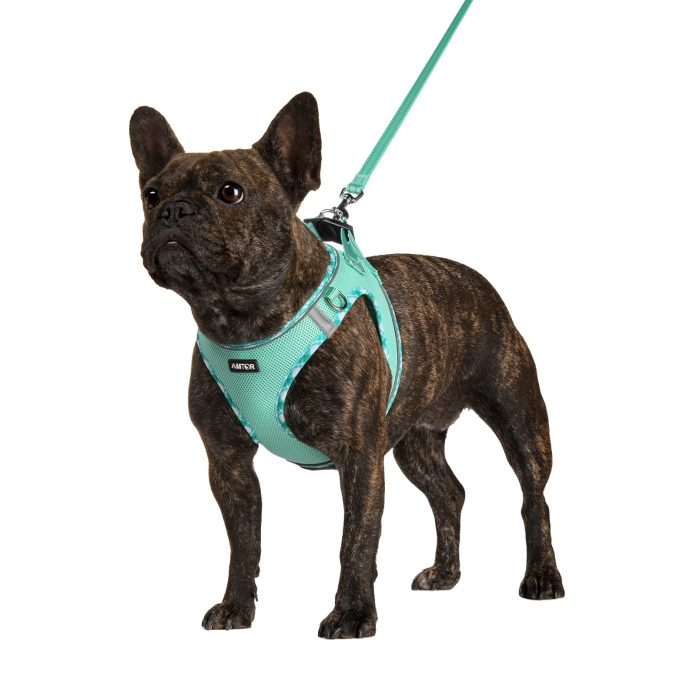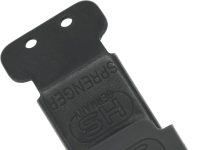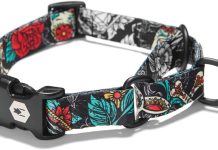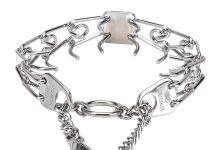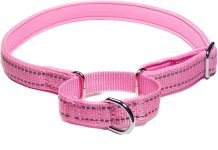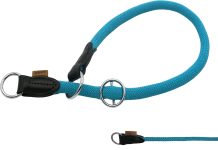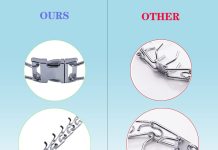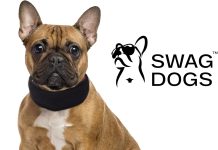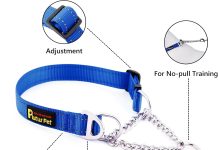Are you a proud owner of a lovable Pitbull or another large breed dog? If so, you probably understand the importance of finding the perfect dog harness. With so many options available on the market, it can be overwhelming to choose the right one. In this article, we will explore the best dog harness for large breeds like Pitbulls and provide you with valuable insights to help you make an informed decision. Whether you’re looking for comfort, durability, or control, we’ve got you covered. So, let’s dive in and discover the perfect harness to ensure your furry friend’s safety and happiness during walks and outdoor adventures.
Types of Dog Harnesses
There are several different types of dog harnesses available on the market, each with its own unique features and benefits. Understanding these options can help you choose the right harness for your Pitbull. Here are some of the most common types of dog harnesses:
Table of Contents
Front Clip Harness
A front clip harness is designed with a ring at the front of the chest area. This allows you to attach the leash to the front, providing better control and reducing pulling behavior. The front clip design encourages dogs to walk beside you rather than in front, making it a great option for Pitbulls who tend to be strong and determined.
Back Clip Harness
The back clip harness features a ring positioned on the back of the harness. This type of harness is suitable for well-trained dogs who don’t pull excessively. Back clip harnesses are easy to put on and take off and offer sufficient control during walks.
No-Pull Harness
As the name suggests, a no-pull harness is designed to discourage pulling behavior. It typically has a front clip attachment to redirect the dog’s forward momentum when pulling occurs. No-pull harnesses are helpful for training dogs to walk calmly on a leash and are particularly useful for Pitbulls who have a tendency to pull due to their strength and energy levels.
Vest Harness
A vest harness is a type of dog harness that covers a larger portion of the dog’s body, providing extra support and distributing pressure more evenly. This design can be particularly beneficial for Pitbulls with neck or back issues, as it reduces strain on these areas. Vest harnesses often have both front and back clip attachments for added versatility.
Step-In Harness
A step-in harness is designed to be easy to put on and take off. It consists of two loops that the dog’s legs step into, with the straps crossing over the dog’s back and fastening securely. This style of harness is a popular choice for dogs who are not comfortable having something placed over their head or for owners who have difficulty maneuvering their dog’s front legs.
Harness with Handle
A harness with a handle is a practical option for Pitbulls who may need additional control or assistance. The handle allows you to quickly and securely grab hold of your dog, helping to keep them close and secure in potentially unsafe situations. This type of harness is also useful for senior or injured dogs who may require extra support or guidance.
Head Halter Harness
A head halter harness works similarly to a traditional halter used on horses. It has a strap that goes around the back of the dog’s head and another that attaches under the chin. This design gives the handler more control over the dog’s head and can be effective in preventing pulling or redirecting their focus. However, it’s important to properly introduce and train your Pitbull to wear a head halter harness, as some dogs may initially find it uncomfortable or restrictive.
Tracking Harness
A tracking harness is specifically designed for activities such as tracking, search and rescue work, or scent detection. It is usually made of durable materials and has multiple attachment points, allowing for the secure attachment of gear or accessories. While a tracking harness may not be necessary for everyday walks, it can be a valuable tool for Pitbulls involved in advanced training or specific jobs.
Considerations for Choosing a Harness
When choosing a harness for your Pitbull, there are several important factors to consider. Taking the time to evaluate these considerations will help ensure you select a harness that meets your dog’s needs and provides a safe and comfortable walking experience. Here are some key considerations:
Size and Fit
Ensuring the correct size and proper fit is essential for your dog’s comfort and safety. Measure your Pitbull’s girth and refer to the manufacturer’s sizing chart to determine the appropriate size. Look for harnesses with adjustable straps to allow for a secure and customized fit.
Material and Durability
Choose a harness made of high-quality materials that are durable and built to last. Pitbulls are strong dogs, so the harness should be able to withstand their strength and activity levels.
Comfort and Padding
A comfortable harness is crucial for your Pitbull’s enjoyment during walks. Look for designs that are padded or lined with soft materials to prevent chafing or discomfort. Breathable fabrics can also help keep your dog cool and comfortable, especially in hot weather.
Control and Safety Features
Consider the control and safety features of the harness. A secure and sturdy attachment point for the leash, reflective strips for visibility during night walks, and additional safety measures like breakaway clips or escape-proof designs can enhance safety and peace of mind.
Training Compatibility
Depending on your dog’s training needs, you may want to choose a harness that integrates well with your training methods. Some harnesses are specifically designed for positive reinforcement training and have features like front clips for redirecting pulling behavior.
Weather and Temperature
Consider the climate and weather conditions in your area when choosing a harness. Look for options that are suitable for both hot and cold weather. Breathable and moisture-wicking materials can help keep your Pitbull comfortable during walks in hot weather, while insulated or weather-resistant materials can provide added warmth in colder climates.
Ease of Putting On and Taking Off
A harness that is easy to put on and take off can make your daily walks more convenient. Step-in harnesses or those with simple clip fastenings are often the easiest to use, especially if your Pitbull is not accustomed to wearing a harness.
Recommended Dog Harnesses for Pitbulls
When it comes to Pitbulls, having the right harness can greatly enhance the walking experience for both you and your furry friend. Here are some recommended dog harnesses for Pitbulls:
Rabbitgoo No-Pull Dog Harness
The Rabbitgoo No-Pull Dog Harness is a popular choice for Pitbull owners. It features a front clip design to discourage pulling and has adjustable straps for a customized fit. The harness is made of durable nylon with reflective stitching for added safety during walks.
BARKBAY No-Pull Dog Harness
The BARKBAY No-Pull Dog Harness is another excellent option for Pitbulls. It boasts a sturdy front clip attachment to reduce pulling and provides ample padding for maximum comfort. The harness is made of durable nylon and has reflective straps for visibility.
Chai’s Choice Outdoor Adventure Dog Harness
The Chai’s Choice Outdoor Adventure Dog Harness is built to withstand active outdoor adventures with your Pitbull. It features a front and back clip design, making it versatile for various walking styles. The harness is constructed with scratch-resistant nylon and has adjustable straps for a secure fit.
Kurgo Tru-Fit Smart Dog Harness
The Kurgo Tru-Fit Smart Dog Harness is a well-known and trusted option for Pitbulls. It offers both front and back clip attachments and has five adjustment points for a precise fit. The harness is made of durable and machine-washable materials.
Ruffwear Front Range Dog Harness
The Ruffwear Front Range Dog Harness is a high-quality option designed for active dogs like Pitbulls. It features two attachment points and has reflective trim for enhanced visibility. The harness is made of durable and comfortable materials and has an easy-to-use buckle closure system.
OneTigris Tactical Dog Harness
The OneTigris Tactical Dog Harness is perfect for Pitbulls who require extra control and support. It is constructed with durable nylon and has a front and rear attachment point. The harness also has a handle for better control and multiple adjustable straps for a secure fit.
Expawlorer Big Dog Soft Reflective Harness
The Expawlorer Big Dog Soft Reflective Harness is specifically designed for larger breeds like Pitbulls. It has a padded chest plate for added comfort and a reflective stripe for safety. The harness is adjustable and made of durable nylon.
Julius-K9 PowerHarness
The Julius-K9 PowerHarness is known for its strength and durability. It features a heavy-duty buckle and sturdy handle for added control. The harness is made of scratch-resistant and water-repellent material, making it suitable for all weather conditions.
Eagloo Dog Harness
The Eagloo Dog Harness is a no-pull harness that provides good control without restricting movement. It features two metal leash attachment points and four adjustable straps for a customized fit. The harness is made of durable nylon and has reflective stitching for safety.
Rabbitgoo Dog Harness and Leash Set
The Rabbitgoo Dog Harness and Leash Set is a convenient option for Pitbull owners. It includes both a front clip harness and a matching leash. The harness has adjustable straps and is made of durable nylon. The set offers excellent value for money.
How to Measure and Fit a Dog Harness
Proper measuring and fitting of a dog harness are crucial for your Pitbull’s comfort and safety. Here’s a step-by-step guide on how to measure and fit a dog harness:
Measure the Girth
Using a flexible measuring tape, measure the widest part of your Pitbull’s chest, also known as the girth. The tape should be snug but not too tight. Note down the measurement.
Adjustable Straps
When choosing a harness, opt for one with adjustable straps. This will allow you to customize the fit to your dog’s unique body shape and size.
Test for Proper Fit
Once you have adjusted the straps to the appropriate length, put the harness on your Pitbull. Ensure the chest plate rests snugly against the chest, leaving enough room for your dog to move its legs freely. You should be able to fit two fingers under the harness for a comfortable fit.
Avoid Chafing or Rubbing
Check for any signs of chafing or rubbing after your Pitbull has worn the harness for a short period. Look for redness, sores, or irritation. If any issues arise, readjust the fit or consider trying a different harness.
Training Tips for Harness Introduction
Introducing your Pitbull to a harness can often require a bit of training and adjustment. Here are some useful tips to make the process easier:
Positive Reinforcement
Use positive reinforcement techniques when introducing the harness to your Pitbull. Reward them with treats or praise for calm behavior and gradually increase the time they wear the harness.
Start Slowly
Begin by allowing your Pitbull to sniff and investigate the harness without wearing it. Once they are comfortable with the sight and smell of the harness, slowly introduce it by slipping it over their head and then removing it. Repeat this process until your dog is comfortable with the harness around their neck.
Use Treats or Toys
Associate the harness with positive experiences by offering treats or engaging in playtime while your Pitbull is wearing it. This will help create a positive association with the harness and make it an enjoyable experience for your dog.
Associate Harness with Fun Activities
Put the harness on your Pitbull before engaging in enjoyable activities like going for a walk or playing in the park. This will create a positive link between the harness and fun experiences, encouraging your dog to associate the harness with excitement and enjoyment.
Practice Indoors First
Start by having your Pitbull wear the harness indoors for short periods. This will allow them to adjust to the feeling of the harness without any distractions. Gradually increase the duration of wearing the harness and observe your dog’s comfort level.
Transition to Outdoor Walks
Once your Pitbull is comfortable wearing the harness indoors, start incorporating short walks into the training routine. Gradually increase the length and difficulty of the walks as your dog becomes more accustomed to wearing the harness outdoors.
Benefits of Using a Dog Harness
Using a dog harness offers several benefits for both you and your Pitbull. Here are some of the advantages of using a harness:
Even Distribution of Pressure
Unlike traditional collars, a harness distributes pressure evenly across the dog’s body. This can be particularly beneficial for Pitbulls, as it reduces strain on their neck and throat, minimizing the risk of choking or collar damage.
Reduced Risk of Choking or Collar Damage
Pitbulls are strong and powerful dogs, and they can put a lot of force on their collar during walks. A harness helps alleviate the pressure and prevents choking or collar damage that can occur with excessive pulling.
Better Control during Walks
Harnesses provide greater control over your Pitbull’s movements, especially with front clip designs that discourage pulling. This means you can guide your dog more effectively and prevent them from lunging or darting after distractions.
Minimized Pulling and Lunging
Many dogs have a tendency to pull on the leash, especially when they see something enticing. A harness can help reduce this pulling behavior by giving you more control and redirecting their attention to you.
Increased Safety for Escape Artists
Pitbulls are known for their strength and determination, and some may have a knack for slipping out of collars or escaping from them. Harnesses are more secure and less likely to come off than collars, providing increased safety and preventing your Pitbull from running off.
Comfortable Alternative to Collars
Harnesses are generally more comfortable for dogs, as they distribute pressure evenly across the chest and shoulders instead of focusing it on the neck. This can be particularly beneficial for Pitbulls with sensitive necks or those prone to respiratory issues.
Support for Dogs with Health Issues
Pitbulls may be prone to certain health issues, such as hip dysplasia or arthritis. A harness can provide additional support and stability for dogs with these conditions, making walks more comfortable and reducing strain on affected joints.
Training Aid for Better Leash Manners
Using a harness during training sessions can be beneficial for teaching your Pitbull proper leash manners. Front clip harnesses, in particular, can discourage pulling and make it easier to redirect your dog’s attention back to you.
Common Concerns with Dog Harnesses
While dog harnesses offer numerous benefits, it’s important to be aware of some common concerns that may arise. Here are a few issues to consider:
Restriction of Natural Movement
Some dogs may initially feel restricted wearing a harness, especially if they are not accustomed to it. However, with proper training and positive reinforcement, most dogs will quickly adapt to the feeling of a harness and resume their natural movement.
Potential Rubbing or Discomfort
Improperly fitted harnesses or those made from low-quality materials may cause rubbing or discomfort for your Pitbull. This can lead to chafing or irritation. It’s essential to regularly check your dog’s harness for signs of rubbing and ensure that it fits correctly.
Incorrect Sizing and Weight Distribution
Choosing the wrong size harness can lead to discomfort or inadequate support for your Pitbull. It’s important to carefully measure your dog’s girth and refer to the manufacturer’s sizing chart. Additionally, using a properly fitted harness ensures that weight is evenly distributed, preventing strain on specific areas.
Difficulty in Finding the Right Fit
Finding the right fit for your Pitbull’s unique body shape can sometimes be challenging, especially if they have a broad chest or muscular build. However, many harnesses come with adjustable straps and offer multiple sizes to cater to various breeds.
Possible Escape or Slip Situations
While harnesses are generally more secure than collars, there is still a risk of escape if the harness is not properly fastened or if the dog slips out of it due to pulling or backing out. Regularly check the fit and security of your Pitbull’s harness to minimize the risk of escaping.
Extra Time Required for Application
Putting on a harness may take slightly longer than attaching a collar. However, with practice and familiarization, you can become more efficient. The benefits of a harness often outweigh the extra time required.
Additional Accessories for Harnesses
Several accessories can enhance your Pitbull’s walking experience when used in conjunction with a harness. Here are some popular options:
Leashes
Pairing your Pitbull’s harness with a suitable leash is essential for safe and secure walks. Look for a leash made of durable materials with a secure attachment point that matches the harness.
Attachable Bags and Pouches
Attachable bags and pouches can be useful for carrying walking essentials like treats, waste bags, or small personal items. These accessories can be clipped onto the harness, allowing you to have everything you need conveniently at hand during walks.
Patches and ID Tags
Custom patches and ID tags can be attached to your Pitbull’s harness for identification and additional information. These tags can include your dog’s name, your contact information, or any specific instructions for your dog’s well-being.
Safety Lights and Reflective Strips
If you frequently walk your Pitbull in low-light conditions or at night, consider adding safety lights or reflective strips to the harness. These additions increase the visibility of your dog, ensuring they are easily seen by motorists or pedestrians.
Handle Covers
Handle covers can provide an extra layer of comfort and grip on the handle of your harness. They can help prevent hand strain or discomfort during walks, especially for those with larger or stronger Pitbulls.
Car Restraint Clips
Car restraint clips are essential for securely restraining your Pitbull in the car. These clips allow you to attach the harness to the car’s seatbelt, ensuring your dog remains safe and secure during car rides.
Cooling and Heating Attachments
For extreme weather conditions, cooling attachments or heating pads compatible with certain harnesses can be added to help regulate your Pitbull’s body temperature. These attachments can provide extra comfort and prevent overheating or excessive cold.
Maintenance and Cleaning Tips
Proper maintenance and cleaning of your Pitbull’s harness are essential to ensure its longevity and functionality. Here are some maintenance and cleaning tips:
Follow Manufacturer’s Instructions
Always refer to the manufacturer’s instructions for specific cleaning and maintenance guidelines for your Pitbull’s harness. Different harnesses may require different care instructions depending on the materials used.
Hand-Washing or Machine-Washing
Most harnesses can be hand-washed using a mild detergent or machine-washed on a gentle cycle. Always check the manufacturer’s instructions to ensure compatibility with machine-washing.
Inspect for Damage Regularly
Regularly inspect your Pitbull’s harness for any signs of wear and tear, such as fraying straps or loose stitching. This will allow you to identify and address any damage before it becomes a safety concern.
Air-Drying or Drying Method
Properly air-drying the harness is crucial to prevent damage and maintain its shape. Avoid using a dryer, as the high heat can warp or shrink certain materials.
Storage Considerations
When not in use, store the harness in a clean and dry location, away from direct sunlight. This will help prevent any degradation or discoloration, keeping the harness in optimal condition.
Conclusion
Choosing the right harness for your Pitbull is essential for their comfort, control, and safety during walks. Consider the specific needs of your dog, such as size, breed, temperament, and any existing health conditions. Take the time to measure and fit the harness correctly and use positive reinforcement techniques during the training process. By selecting a suitable harness and following proper maintenance and cleaning, you can ensure enjoyable and safe walks with your Pitbull.

